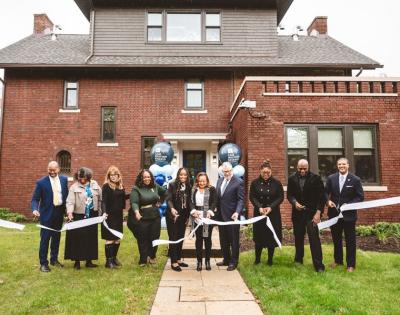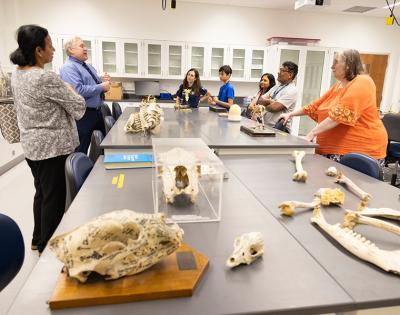Featured Around CWRU

October 23, 2024
New study from Case Western Reserve University reveals link between oxygen delivery and reproductive success among women living on the high Tibetan Plateau Breathing thin air at extreme altitudes presents a significant challenge—there’s simply less oxygen with every lungful. Yet, for more than…

October 23, 2024
Try, try again. Researchers know that great discoveries can take winding, unpredictable paths. In the face of unfunded grant proposals, conflicting results and people who don’t yet see the vision, research can sometimes feel like failure—but persistence through the process is what often drives…

October 22, 2024
The National Institutes of Health awarded a four-year, $2.6 million grant to researchers at Case Western Reserve University to study how high blood-pressure drugs affect patients with chronic kidney disease (CKD). More specifically, they want to study whether such medications increase the risk…

October 16, 2024
Case Western Reserve restores century home as university’s new Wade Park Community Engagement Center
New center dedicated to community activities, education and programming Built in 1924, a 4,500-square-foot home in Cleveland’s Magnolia-Wade Park Historic District sat vacant for nearly a decade. But with a formal ribbon-cutting yesterday, the property—restored with a $2.3 million investment…

October 15, 2024
With a new four-year, $1.3 million grant from the U.S. Department of Veterans Affairs, researchers at Case Western Reserve University are investigating a new approach to treat acute myeloid leukemia (AML) in military veterans. AML is the most common form of blood cancer in adults, and many…

October 08, 2024
Research could lead to new discoveries in cancer medicine With a new five-year, $1.9 million grant from the National Institute of General Medical Sciences (NIGMS), researchers at Case Western Reserve University will develop computer software to analyze and interpret complex genome…

October 04, 2024
With a new $4 million grant from the U.S. Department of Energy (DOE), researchers at Case Western Reserve University will lead a project to improve the lifecycle of photovoltaic (PV) solar energy systems—from fabrication and electricity production through their end of service. It’s an effort to…

October 02, 2024
Researchers awarded five-year, $3.7M grant from National Institutes of Health, National Cancer Institute Researchers at Case Western Reserve University and Vanderbilt University are pioneering a new approach to prostate cancer surgery by combining advanced robotics and “low-field” MRI…

October 01, 2024
Case Western Reserve University is cultivating a new generation of scientists with the opening of its 30,000-square-foot, state-of-the-art biology laboratory classrooms and collaborative spaces. As part of Parent and Family Weekend (Sept. 27-29), President Eric W. Kaler, Deputy Provost Lee…

September 27, 2024
With a $3 million grant from the NIH, experts are using advanced imaging technology to better understand changes in the infant brain that may accompany Neonatal Abstinence Syndrome Magnetic resonance fingerprinting (MRF), first described in the journal Nature in 2013 by engineers at Case Western…

